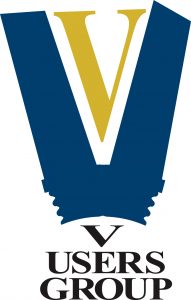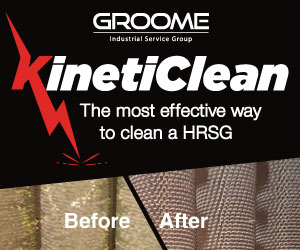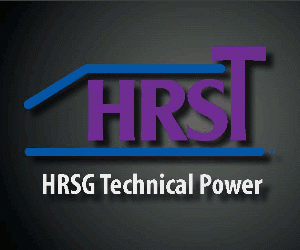 Perhaps the best way to begin this section on experiences shared by V84.2/V84.3A owner/operators during the annual conference of V users at the Pittsburgh Marriott City Center, September 2019, is to share the following passage from an announcement on the meeting from Scott Wright of PowerSouth Energy Co-op:
Perhaps the best way to begin this section on experiences shared by V84.2/V84.3A owner/operators during the annual conference of V users at the Pittsburgh Marriott City Center, September 2019, is to share the following passage from an announcement on the meeting from Scott Wright of PowerSouth Energy Co-op:
“Many of you know Olaf Barth, who has been the key contact for the users to Siemens for the last few years, is leaving the group. Dominion no longer owns Manchester Street, so Olaf is working on other topics. Many thanks to Olaf for his expertise and all his efforts.” The CCJ editors extend their thanks to Olaf as well. He continues to be a valuable resource for us when gas-turbine O&M questions arise on these and other frames.
Interaction among owner/operators at the annual V conference is robust, similar to that at other user group meetings. These are ideal venues for tapping into the industry’s knowledge on how to operate your plant more economically, reliably, and with less environmental impact.
Perhaps the best way to characterize the availability of OEM representatives, third-party suppliers, and plant personnel to address your concerns and answer your questions is free consulting—provided by experts. And this meeting is truly free, the OEM picking up all but your transportation and hotel room costs. It’s the optimal way for anyone with a V machine in his or her plant to learn.
Safety is a first-day topic sure to create discussion and get attendees engaged. At last year’s V meeting hexavalent chrome—a byproduct of welding chrome-containing alloys—was a topic of great interest, as expected. Siemens employees had expended great effort in the last year to mitigate the issue—finding the contaminant on combustion basket flanges, bolting, exhaust diffuser, exterior case of the IP turbine, etc.
The yellow residue identified with the problem, calcium chromate, is formed by the oxidation of a chrome-containing base metal in the presence of a calcium source—such as anti-seize compounds and high-temperature insulation pads. Anti-seize test results reported at the meeting indicated Molykote, Loctite, and Nominal Blue Grease tested positive for hex chrome, while Kluber, Tiodize, and Lube-O-Ring were negative. Kluber Paste HEL46-450 and Tiodize T8F-H were recommended.
Additionally, bolts that had tested positive and were bathed in a 10% citric-acid solution for 5 to 10 minutes, then rinsed with clean water, reduced chrome 6 to harmless chrome 3. However, no such easy cure for contaminated insulation; it must be disposed of in an environmentally responsible manner.
Doing business online. There are questions from the floor at virtually every user meeting concerning the OEM’s processes and procedures, and last year’s V meeting had its share—including snags in the ordering of parts (such as functionality issues encountered when using the online quoting/ordering system), delivery delays, response time on technical issues, etc.
Siemens representatives listened carefully and provided immediate assistance where possible. More thorough guidance was reserved for a web meeting in early March. The good news from that event: Enhanced e-commerce capabilities would be released this fall.
Plant specific questions and observations included the following:
-
- The SPPA-E3000 Electrical Solutions Excitation and Startup Frequency Converter System was regarded problematic by several users who thought more specifics should be made available to owner/operators. One attendee suggested that the excitation system was a “black hole.”
- A participant said his steam turbine experienced vibrations close to the trip limit when a restart was attempted less than two hours after shutdown.
- Failure reported in a blowoff bypass line: Butterfly valve was installed backwards but never noticed until the third major.
- Support for Teleperm and TXP parts, training, and service was called into question by one user with a legacy unit.
- Gas-turbine output reported dropping a few months after a CMF (compressor mass flow) upgrade, and hadn’t recovered. No other user in attendance had experienced this and the OEM questioned whether the performance loss was a problem unrelated to CMF. Evaluation continues.
- Exhaust transition liner with low EOH was said to have experienced excessive cracking. More information and analysis were required for a proper evaluation.
- A user expressed interest in operating at a lower gas supply pressure and wanted to know if pressures lower than those stated in the O&M manual be allowed. Question was referred to the OEM.
- Problems were reported with combustor thermocouples of a new designed released to the fleet.
- Some discussion revolved around the compressor casing and when it was likely to need replacement.
- Performance degradation over time was another topic of interest. Can the degradation be correlated to starts and EOH? What are the ranges for loss and recovery? What can users do to minimize losses?
- Issues igniting in high humidity received mention. One specific question: Should there be any change to tuning or procedure to accommodate high humidity?
- Wet compression versus power augmentation was discussed. With Caldwell Energy in the exhibition hall, attendees could get answers to their questions direct from the experts.
- Actuators for inlet guide vanes were reported by one user as being upgraded to REXA Electraulic™ actuators which combine the simplicity of electric operation, the power of hydraulics, and flexibility. There was no manufacturer support available for the legacy actuators being replaced.
- Paint specs for the filter housing were discussed with Taylors Industrial Coatings Inc recommended by one attendee (see recently published “Air inlet system maintenance critical to assure top gas-turbine performance).
- Vane-carrier cracking was identified as a problem in the V84.3A fleet.
- One user was upgrading his gas turbine’s evap-cooler framework from PVC to stainless steel to combat premature degradation. Schock Manufacturing was mentioned for its filter-house work, in addition to silencers and exhaust systems.




